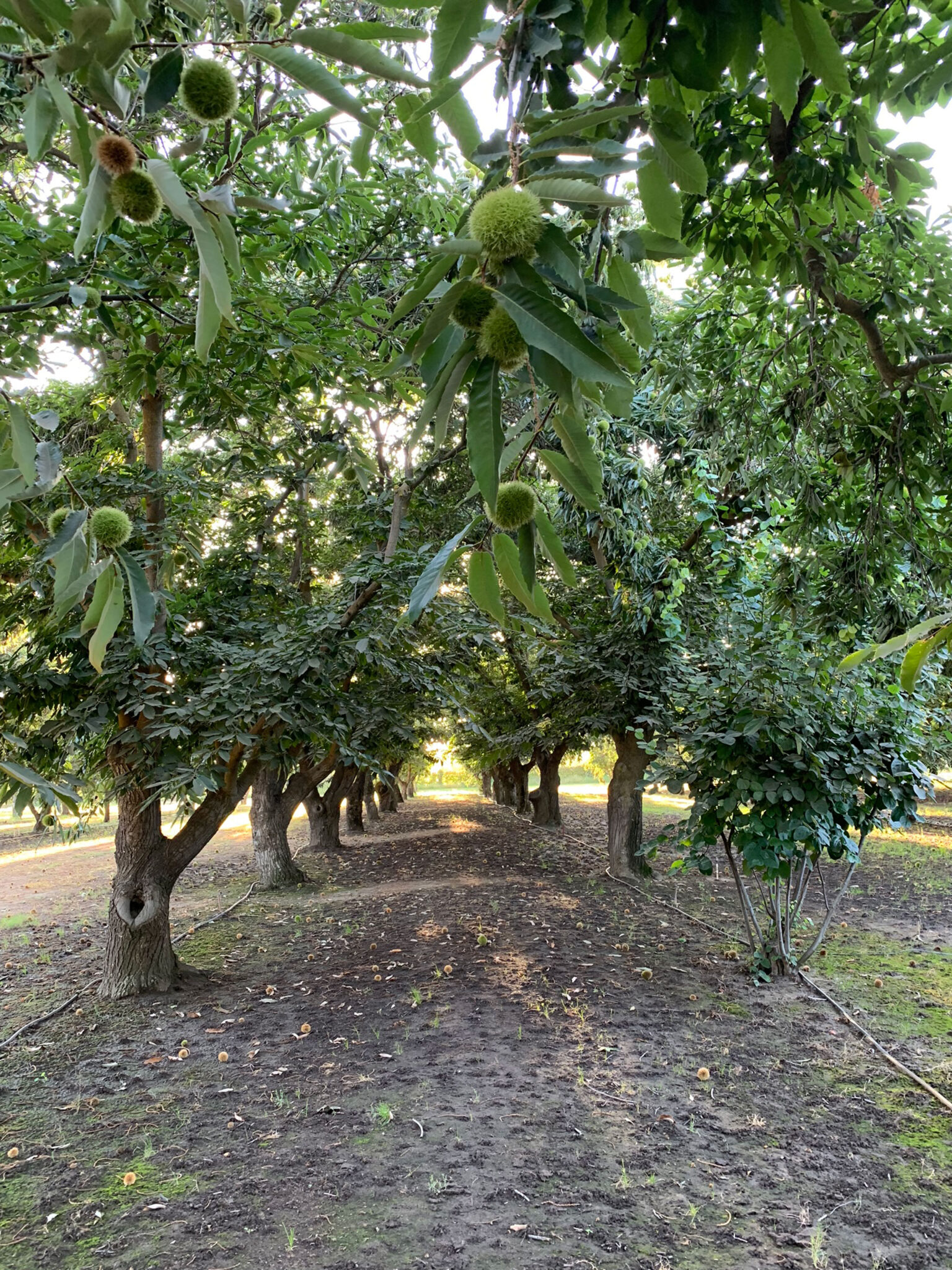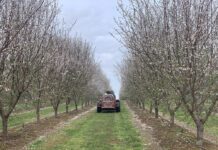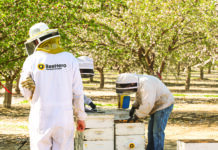Chestnuts are not just a Christmas season specialty. The familiar Christmas song gained this unique tree nut a place at the holiday table, but its sweet flavor places chestnuts among the ingredients for many dishes prepared year-round.
Joe and Jenni Avila, chestnut growers in the Modesto area, were familiar with chestnut use in Portuguese cuisine when they began growing chestnuts, but found their customers of diverse ethnic backgrounds value chestnuts for their sweet flavor. The Avila family operation, The Chestnut Farm, grows, harvests, processes and sells chestnuts onsite. Weeks prior to Christmas, in most years, they must hang their ‘sold out’ sign.
Not a Native Nut
Like most tree nuts grown in California, chestnuts are not native to the state. According to a UC Small Farms report, historically, chestnut tree forests were found in most East Coast states where trees grew to heights of 100 feet and the trunks were three to four feet in diameter. In the early 1900s, the species was decimated by the fungal disease Chestnut blight.
More recently, development of a chestnut species tolerant to blight was initiated by State University of New York College of Environmental Science and Forestry (SUNY). Last year, the university sought deregulation of Darling 58, an American chestnut variety developed using genetic engineering for tolerance to chestnut blight.
The Agricultural Marketing Resource Center reports that the U.S. is one of the few nations in the world that can grow chestnuts, yet doesn’t have a significant chestnut industry. In 2018, U.S.
chestnut production was less than 1% of total world production. The U.S. had 919 farms producing chestnuts on more than 3,700 acres. The top five chestnut-producing states are Michigan, Florida, California, Oregon and Virginia.
There are four common species of chestnuts grown in North America, but most trees in commercial orchards are hybrids of these species.
Acre at a Time
Joe Avila said his five acres of chestnut trees started with one acre in 1984 and gradually grew an acre at a time. He said he started with seedling trees and grafted them with the European Colossal variety with a Nevada pollinizer and an Italian chestnut variety. Cross-pollination is required for chestnut trees, but since the pollen is often shed before pistillate flowers are receptive, overlapping male and female bloom from two different varieties is required.
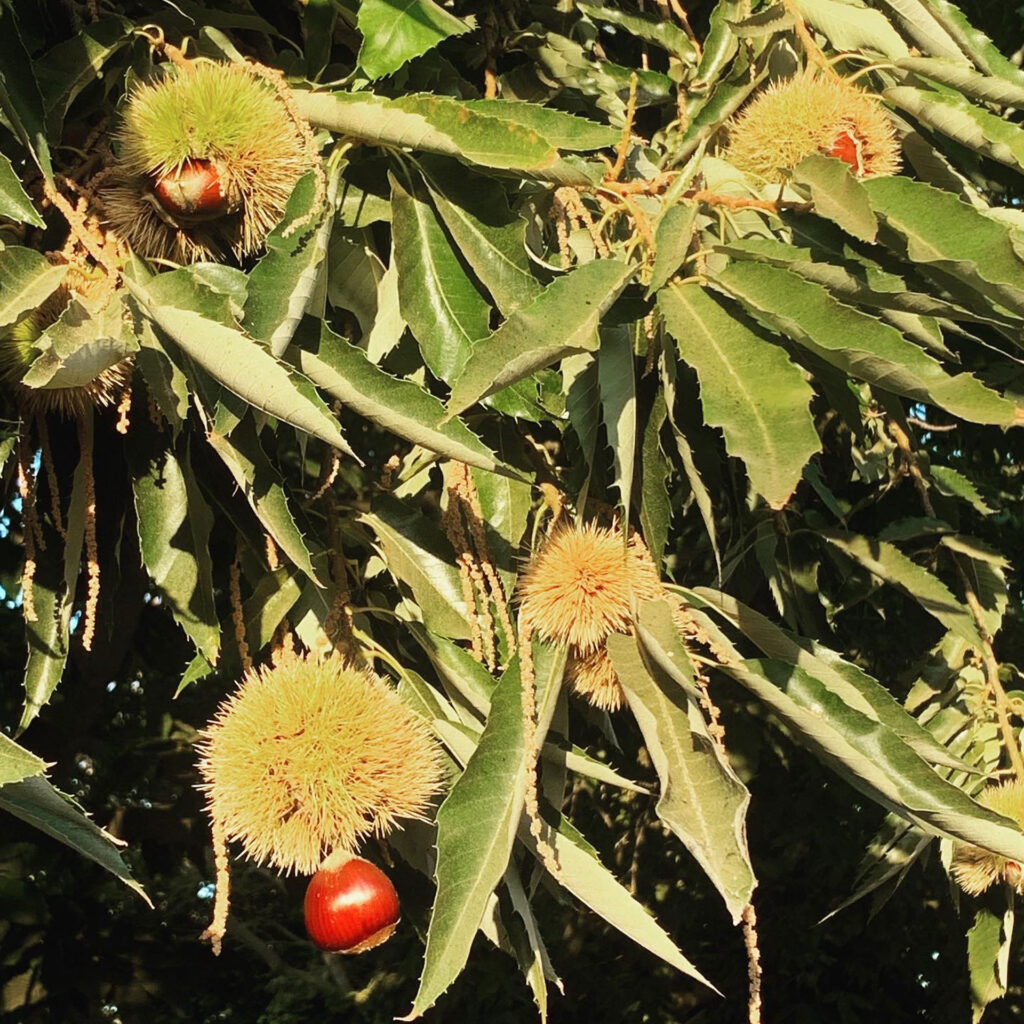
The Colossal variety produces a larger nut, which is more valuable. Avila’s trees are in full production and have reached a height of about 45 feet.
“Our buyers are knowledgeable about chestnuts and are looking for high quality. In the last two years, we have sold out well before the holidays,” Avila said.
Some customers prepare them by boiling and serving them in main dishes, while others prefer to roast the nuts.
Avila said a key to quality in chestnuts is to place the nuts in cold storage after harvest. Stored at 35 degrees F, they retain their sweet flavor.
“Yield is important, but you must have quality or they don’t sell,” Avila said. “They have to be sweet and peel well.”
“Chestnuts are more like a grain, containing about 40% carbohydrate, 40% water, 5% to 10% protein and less than 5% oil,” Avila said.
Harvest in September
The Avila’s chestnut harvest usually begins about Sept. 10 when the mature chestnuts begin to fall to the ground. Those early nuts are harvested by hand. Avila said as they walk the orchards to harvest the fallen nuts, they crush the prickly burr that encases the dark, hard leathery shell and pick up the nuts by hand. The burrs are easy to split when mature. Ideally, Avila said, most of the crop is already out of the burr at harvest with only about 30% still encased. Degree of burr separation from the shell and ease of pellicle removal from the nut meat are quality characteristics.
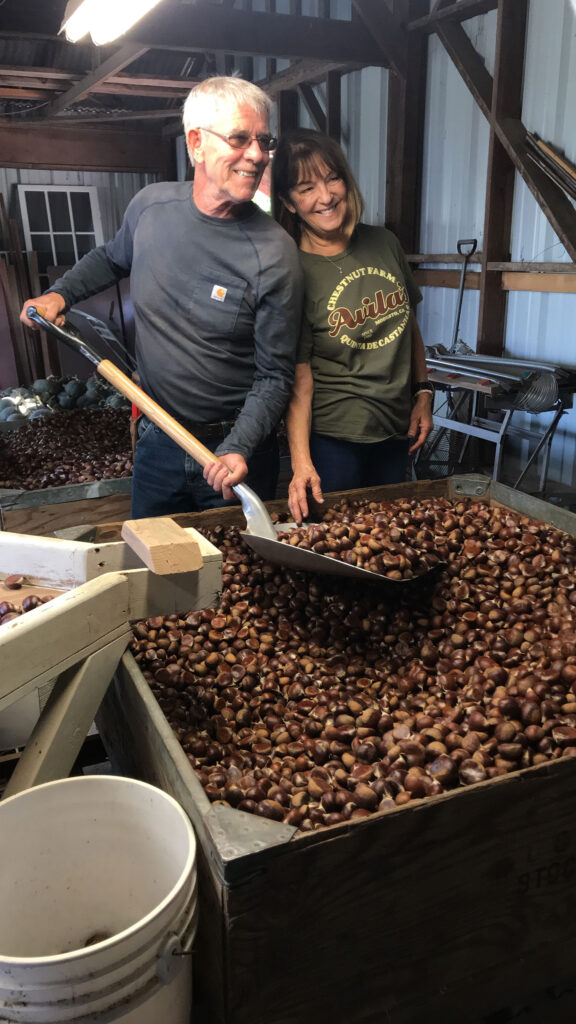
Hand harvest only lasts a short time. By the end of the month, Avila said most of the nuts have fallen to the ground where they are swept in a windrow and picked up by a machine. Mechanical shakers come in at the end to remove the last few nuts.
The Avila’s next step is to sort the nuts, discarding any that are off-quality. The nuts are then sized by machine into four sizes and placed in bags. The Avilas weigh the bags to make sure they contain 25 pounds, then place them in cold storage until they are sold.
Chestnut value is related to its size, with the larger nuts at the highest value.
Ease of Production
Orchard care for chestnut trees is relatively easy. Avila said he does not have organic certification, but need for insecticide application is rare. Insect pests are not an issue in his orchards, Avila said.
Nutrition is also a factor in nut size. Avila said postharvest potash application is done prior to winter rains and, if needed, nitrogen is applied in March.
Avila said the burrs left on the orchard floor add organic material to the soils and foster growth of beneficial microbes and night crawlers that aerate the soil and aid in nutrient uptake by the trees.
The organic matter also holds soil moisture. In mature orchards, weeds are not a problem due to shading on much of the orchard floor. When trees are young, he said cover crops are used to add organic matter. Avila said he does incorporate some of the orchard debris, but most has decomposed by the next harvest season. He does some scraping to keep the orchard middles flat.
Most of those production practices focus on producing top yield and quality.
“You need yields, but what is really important is to have the quality, the flavor and easy peeling or they won’t sell well.”







